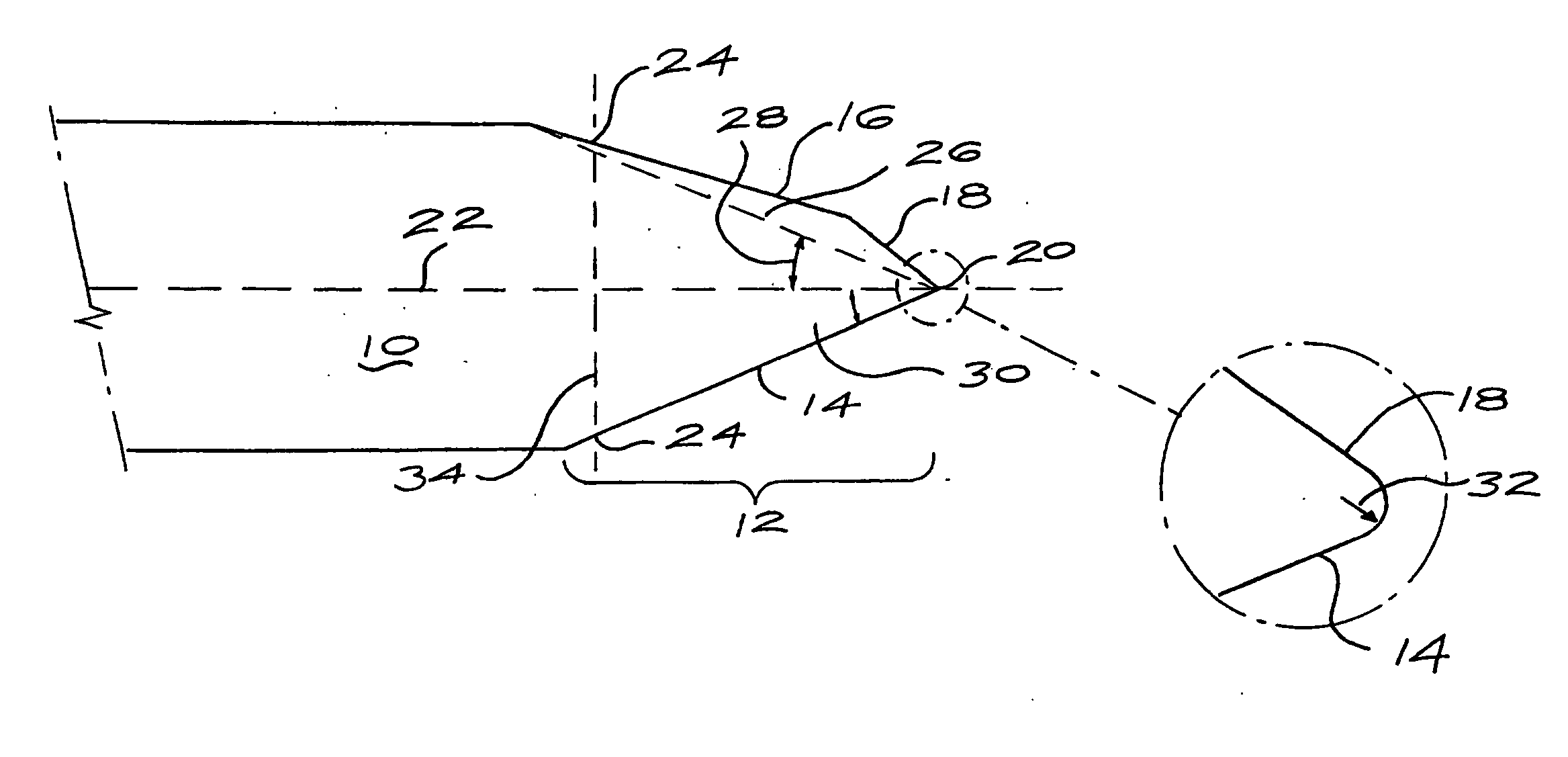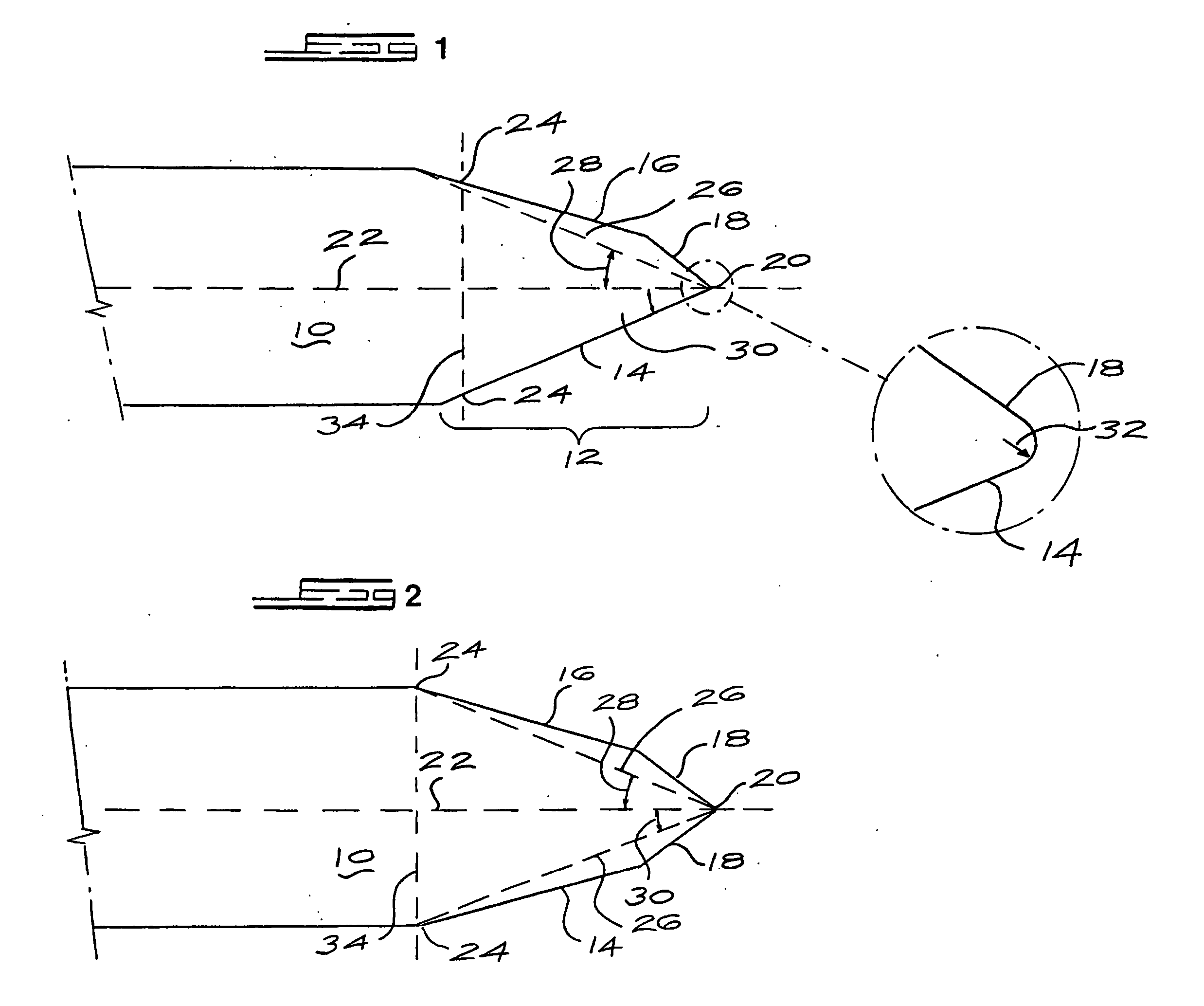Cvd diamond cutting insert
a diamond cutting and insert technology, applied in the direction of metal working devices, etc., can solve the problems of limited use of multiple edges, poor longevity, and inability to cut easily for self-taught users
- Summary
- Abstract
- Description
- Claims
- Application Information
AI Technical Summary
Problems solved by technology
Method used
Image
Examples
example 1
[0033] A sheet of polycrystalline CVD diamond was removed from a tungsten substrate on which it was grown. The sheet had opposite flat and parallel surfaces which were processed by removing the rough growth surface on the diamond using a lapidiary-based technique. Then both surfaces were polished to a roughness of less than 100 nm Ra, removing at least 5 μm of diamond from the nucleation face and forming a sheet or layer of about 200 μm thickness.
[0034] The diamond sheet was cut using a Nd:Yag laser to produce a blank of the basic razor blade geometry; in this case a rectangular shape of dimensions 40 mm long and 4 mm wide and 200 μm thick and orthogonally cut edges.
[0035] A holder was prepared to hold a stack of these blade blanks at an angle of 70° to the normal of a processing wheel. The blanks were lapped and polished to form asymmetric blades with an effective full angle of 20°.
[0036] One of the blades was then mounted into a holder suitable for shaving, and was found to be ...
example 2
[0037] One of the blades produced in Example 1 was further processed by laser cutting and then ion beam milling the cutting tip to form a small (approx. 5 μm) secondary facet at an angle of 35° to the nucleation face placed between the primary facet and the cutting edge. The addition of this secondary facet was to increase slightly the effective full angle of the blade at 40 μm from the tip from 20° to about 22°
[0038] This blade was then mounted into a holder suitable for shaving, and was found to be effective in cutting or shaving hair, and particularly male facial hair, off the skin of a person. In use, the blade was mounted in a holder such as to ensure that the surface 16 contacts the skin of the person being shaved allowing the cutting edge tip 20 to penetrate and cut through the hairs and not damage the skin of the person being shaved.
example 3
[0039] The method in Example 1 was repeated, but varying the angle at which the blade blanks were mounted during lapping and polishing to form the primary facet. In particular, primary facets at an angle of 15° and 25° from the nucleation face were also produced. Some of the blanks were further processed to form secondary facets described in Example 2.
[0040] These blades were each then mounted into a holder suitable for shaving, and found to be effective in cutting or shaving hair, and particularly male facial hair, off the skin of a person.
PUM
| Property | Measurement | Unit |
|---|---|---|
| length | aaaaa | aaaaa |
| length | aaaaa | aaaaa |
| length | aaaaa | aaaaa |
Abstract
Description
Claims
Application Information
 Login to View More
Login to View More - R&D
- Intellectual Property
- Life Sciences
- Materials
- Tech Scout
- Unparalleled Data Quality
- Higher Quality Content
- 60% Fewer Hallucinations
Browse by: Latest US Patents, China's latest patents, Technical Efficacy Thesaurus, Application Domain, Technology Topic, Popular Technical Reports.
© 2025 PatSnap. All rights reserved.Legal|Privacy policy|Modern Slavery Act Transparency Statement|Sitemap|About US| Contact US: help@patsnap.com


